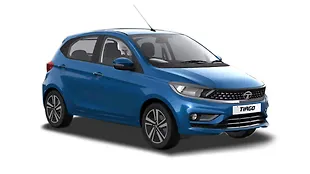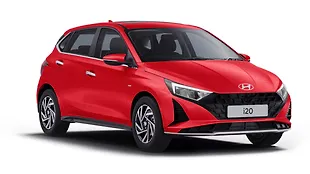Introduction

There has been a lot of movement in the premium hatchback segment in the last year or so. First it was the much improved Hyundai Elite i20 that arrived in August 2014 and earlier this year it was Honda India that introduced us all to the all-new generation of the Jazz. Now both these cars, along with the Volkswagen Polo, are vying for dominance in the market, however, come October 26 and things are only bound to heat up big time as Maruti Suzuki will finally launch its first ever premium hatchback – the Baleno.
Looks

Given their premium positioning, all three cars here look thoroughly upmarket and modern. As for the newest kid on the block, the new Baleno makes use of the standard Suzuki fascia but uses a number of the brand’s modern design touches like the new y-shaped grille and sweptback headlights. In fact, the front is quite reminiscent of the Swift and the old Kizashi. The side profile, meanwhile, is characterised by a long and low roofline that ends at a rather steeply raked C-pillar. Looking at the official pictures, the car appears to have a flat stance albeit with muscular wheel arches and a strong base line.

In comparison, the Jazz looks a lot more utilitarian, thanks to its mini-van like profile. Like the old model, aerodynamics and a massive glass house are some of the key highlights of the new Jazz which cuts through the air more efficiently than before, thanks to different windshield mountings and aerodynamically optimised A-pillar design. While the massive glass house not only improves visibility all around, it also enhances the sense of space for all occupants. Overall, however, the new Jazz retains the basic silhouette of the old car, making it difficult for some to point out differences in the overall stance when viewed from a distance.
The Elite i20 has been designed predominantly for European buyers and it’s pretty much apparent when you look at the Peugeot-like gaping front grille, the stylish blacked out C-pillar and the triple barrel tail lamps which look stunning. All things considered, it’s the Elite i20 that tops our design sheet, followed closely by the new Baleno.

Interior

Like the exterior, the interior of the new Baleno looks vividly different from what we have seen from Maruti Suzuki yet. The cabin gets an all-black treatment with silver detailing, just like the Swift. What’s vastly improved here, though, is the overall quality and the ergonomics. For starters, the centre console is a lot less cluttered and there is a lot more equipment on offer as well. On the top-spec variant, Maruti is offering climate control, steering mounted audio controls, touch screen infotainment system, multicolour instrument cluster and lots more.
Moving over to the Honda, the new Jazz is just as tall and wide as the old car but it’s longer by 55mm and houses a wheelbase that is lengthened by 30mm. The improved length is evident inside the cabin where you will find a lot of part-sharing with the City, with bits of the dashboard, centre console and the steering wheel lifted straight off the latter. While this isn’t necessarily a bad thing, Honda would have done better by going an extra mile in differentiating the cabin some more.

Being a premium hatch, the Jazz is fairly feature-rich, with top-spec variants featuring twin airbags, ABS, climate control with touch panel, steering mounted audio controls, electrically foldable wing mirrors, touch screen infotainment system with navigation function, rear view camera and a plethora of cubby holes throughout the cabin.
Like the Jazz, the Elite i20 is also noticeably more spacious than its predecessor. The car can easily seat five adults in comfort and keep them occupied with the long list of features on board. Hyundai is known for packing its cars with good equipment levels and the Elite i20 is no different. There’s rear park assist, AC vents for rear passengers, touchscreen infotainment system with navigation facility, key-less entry and dual front airbags. Though what’s alarming is the fact that Hyundai has stopped offering the optional six airbags package for the new i20.

Performance

Globally, the Baleno gets Suzuki’s newly developed 1-litre turbocharged petrol engine, however, for the Indian market Maruti Suzuki is continuing with the familiar 1.2-litre naturally aspirated K-Series petrol engine as well as a Fiat-derived 1.3-litre turbo diesel engine. What’s entirely new here is the CVT gearbox that’s being offered for the first time in any Maruti hatchback.
The 1.3-litre diesel engine in the Baleno makes 75bhp of power and 190Nm of torque. Now this may seem less on paper but thanks to the lower kerb weight (950kg, in fact), the Baleno is expected to be quite sprightly.
Under the stubby hood of the Jazz one can find either the proven 1.2-litre i-VTEC petrol or the relatively new 1.5-litre i-DTEC diesel motor. While the former is available with either a 5-speed manual or a CVT automatic, the diesel gets a 6-speed manual similar to that of the new City.

Known for its refined nature and strong mid-range grunt, the 1.2-litre petrol engine produces 90bhp of power and 110Nm of torque, and in the new Jazz it retains those characteristics. On the contrary, the 1.5-litre i-DTEC four cylinder motor is quite rough although it more than makes up for it with its strong performance thanks to 100bhp and 200Nm on tap.
Hyundai is offering the Elite i20 with two engine options - a four-cylinder 1.2-litre petrol engine with 82bhp and 115Nm and a 1.4-litre diesel unit delivering 89bhp and 220Nm. Both these engines are extremely refined and deliver enough punch for daily driving, with the diesel unit remaining pleasantly smooth even near the redline.

Summary

Post its official launch, the new Baleno will be sold through Maruti Suzuki’s premium line of Nexa dealerships. Now although Maruti hasn’t really shown its usual competitive spirit with the pricing of the S-Cross, the new Baleno is expected to undercut both the Jazz and the Elite i20 by a fair margin. If priced competitively, the Baleno has all the makings of being an even bigger success than Maruti’s previous big launch – the S-Cross.

![Maruti Suzuki Baleno [2015-2019] Image Maruti Suzuki Baleno [2015-2019] Image](https://imgd.aeplcdn.com/272x153/cw/ec/21723/Maruti-Suzuki-Baleno-Right-Front-Three-Quarter-147250.jpg?wm=0&q=80)
![Maruti Suzuki Baleno [2015-2019] Right Front Three Quarter Maruti Suzuki Baleno [2015-2019] Right Front Three Quarter](https://imgd.aeplcdn.com/199x112/cw/ec/21723/Maruti-Suzuki-Baleno-Right-Front-Three-Quarter-147250.jpg?wm=0&q=80)
![Maruti Suzuki Baleno [2015-2019] Exterior Maruti Suzuki Baleno [2015-2019] Exterior](https://imgd.aeplcdn.com/199x112/cw/ec/19751/Maruti-Suzuki-Baleno-Exterior-118756.jpg?wm=0&q=80)
![Maruti Suzuki Baleno [2015-2019] Right Front Three Quarter Maruti Suzuki Baleno [2015-2019] Right Front Three Quarter](https://imgd.aeplcdn.com/199x112/ec/08/76/19751/img/m/Maruti-Suzuki-New-Baleno-Right-Front-Three-Quarter-55663_l.jpg?v=201711021421&q=80)
![Maruti Suzuki Baleno [2015-2019] Dashboard Maruti Suzuki Baleno [2015-2019] Dashboard](https://imgd.aeplcdn.com/199x112/cw/ec/19751/Maruti-Suzuki-Baleno-Dashboard-105544.jpg?v=201711021421&q=80)
![Maruti Suzuki Baleno [2015-2019] Steering Wheel Maruti Suzuki Baleno [2015-2019] Steering Wheel](https://imgd.aeplcdn.com/468x263/cw/ec/19751/Maruti-Suzuki-Baleno-Steering-Wheel-91881.jpg?v=201711021421&q=80)

























